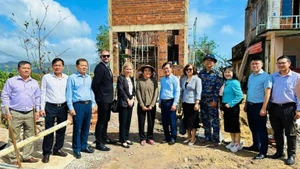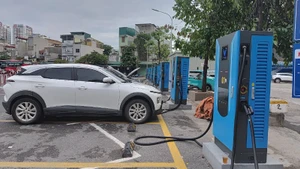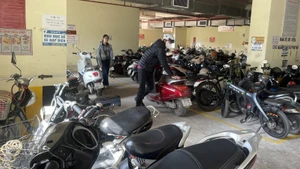Green jobs help minimise the environmental impact of businesses and economic sectors by improving efficiency in the use of energy, raw materials, and water; reducing carbon emissions and greenhouse gases; minimising or avoiding all forms of waste and pollution; protecting or restoring ecosystems and biodiversity; and supporting adaptation to the impacts of climate change.
Green jobs encompass all existing occupations, enhanced with elements of environmental protection and sustainable development, as well as new roles that directly address environmental and climate-related challenges.
According to Dr Do Thanh Bai, Chairman of the Viet Nam Responsible Care Council (VRCC) of Chemical Enterprises under the Viet Nam Chemical Society, within the context of green growth, green jobs play a vital role in promoting structural economic transformation towards sustainability.
They help reduce negative environmental impacts from production and consumption activities, create new employment opportunities in green sectors, and enhance workers’ skills.
This also contributes to social welfare, as green jobs are associated with safer and more stable working environments.
The trend of recruiting a “green workforce”—the foundation of green jobs contributing to green growth—is on the rise globally.
Green jobs play a vital role in promoting structural economic transformation towards sustainability.
The ILO estimates that by 2030, the global transition to sustainable energy could create 25 million jobs, with the Asia-Pacific region alone potentially generating 14.2 million green jobs if the right policies to promote a greener economy are put in place.
In Viet Nam, although still in the early stages of green and sustainable economic transformation, experts note that the trend of green jobs is increasingly attracting the attention of enterprises in their recruitment efforts.
The 2024 “Seeking Meaning in Work” report by ManpowerGroup, a leading global workforce solutions provider, revealed that as many as 85% of Vietnamese workers consider a company’s reputation for social responsibility when deciding whether to accept a job.
Data from the World Bank shows that Viet Nam currently has 39 green occupations, accounting for 3.6% of total employment.
In the near future, up to 88 occupations are predicted to have the potential to become green jobs, representing as much as 41% of total jobs in the market.

The Government-approved National Strategy for Green Growth for the 2021–2030 period, with a vision to 2050, focuses on restructuring the economy in tandem with innovating growth models, reducing greenhouse gas emission intensity through the efficient and economical use of energy and resources, based on science and technology, and applying digital technologies and digital transformation.
It also aims to develop green and sustainable infrastructure, promote green lifestyles, ensure that the green transition process aligns with principles of equity and inclusiveness, and enhance resilience across the entire economy.
The National Action Plan on Green Growth for the 2021–2030 period proposes 18 themes, 57 groups of tasks and activities, and 134 specific tasks and activities, emphasising the development of human resources and green jobs with two groups of tasks and six specific tasks and activities.
This demonstrates that green jobs are an inseparable element within the ecosystem of coordinated activities contributing to sustainable structural economic transformation.
Green jobs are an inseparable element within the ecosystem of coordinated activities contributing to sustainable structural economic transformation.
However, certain challenges remain in developing green jobs in Viet Nam. These include limited awareness of green growth and green jobs within the community, businesses, education and training institutions, and human resource development sectors.
Criteria for evaluating green jobs remain unclear, making practical measurement difficult.
In addition, green sectors in Viet Nam mainly attract unskilled labour, while skilled workers account for only a modest proportion in environmentally oriented economic sectors.
To promote green jobs as a pillar of green growth, experts stress the importance of developing a proper understanding of the concepts of green economy and green jobs in accordance with international standards, while adapting them to the national context.
These concepts need to be legislated and widely communicated to the public.
It is essential to organise activities that introduce and disseminate knowledge about green jobs and green occupations to all target groups—from policymakers, researchers, and educators to enterprises, schools, employers, and employees. Only then can Viet Nam achieve the objectives of the National Strategy for Green Growth 2021–2030, with a vision to 2050.
















